Zero waste is mentioned a good deal on Infomiss. In many places in the US especially progressive urban areas like San Francisco, LA, NY and Seattle, avoiding and drastically limiting waste and packaging is fairly easy. Living zero waste in Asia challenges me as the concept of minimal waste is still not widely popular. I really have to be on my game to avoid plastic and extra ‘stuff’. Having said that, there are many ways that businesses in Asia do far better than similar businesses in the US.
I wanted to share some the ways we live zero waste in Asia and also openly show how difficult it can be to avoid plastic in Malaysia and throughout Asia.
A Grocery haul in Malaysia
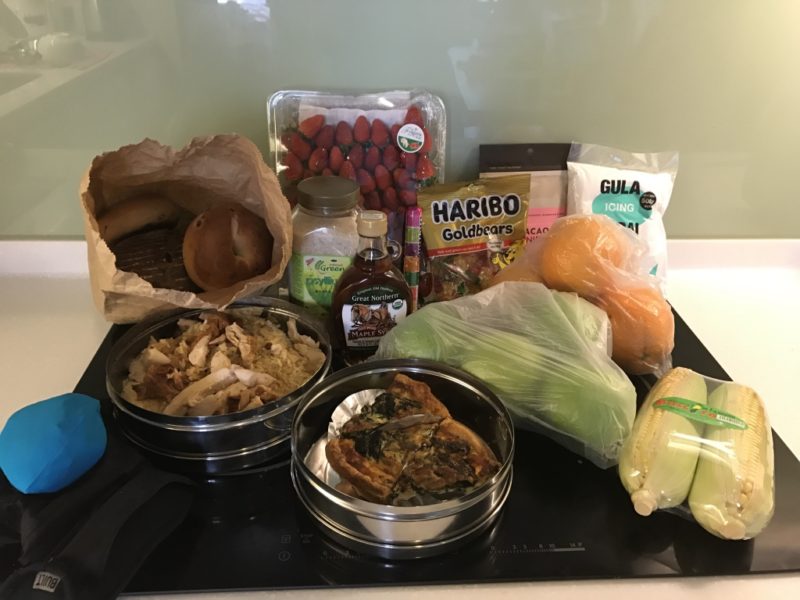
The above picture shows how I was able to shop zero waste and how I wasn’t. It was sick day at our house, so instead of going to my favorite store, I walked to the grocery store one mile from our house for the basics. On the way back, I picked up dinner and breakfast for the following day.
Here’s how I did: The candy was for my sick kid, which I normally buy bulk. My favorite produce store takes back and reuses the tray from the berries. I brought bags for fruit knowing the store likes produce bagged. A restaurant packed our meal in my container. Quiche and breads from the bakery were put in the bag and container I brought. I used my own bags to carry it all home (left). The rest of the foods (corn, maple syrup, icing sugar, psyllium) I haven’t found in Kuala Lumpur without packaging.
Minimal Waste Food Shopping in Asia
In Asia (and in general really), I’ve found that I can’t be too attached to a dogma or a system. If I were super strict about not buying anything in plastic here or while traveling, we would regularly go hungry or be highly inconvenienced. There are certain foods that we can’t live without that are only offered in plastic like polenta, physillium and gluten-free pasta. Bulk foods are not very popular in Malaysia and where I’ve seen bulk, the foods available were processed candies, cookies or snacks.
In the Siam area of Bangkok, I could only find fruit in the supermarket. Most supermarkets around SE Asia want fruit bagged in plastic because they weigh in the produce area rather than at the register. My only option to avoiding plastic was to have my kids do without fruit. Zero waste dogmatism to the extreme would cause major resentments and turn my family away from trying to produce less waste. I used the bags and continue to reuse them a year later.
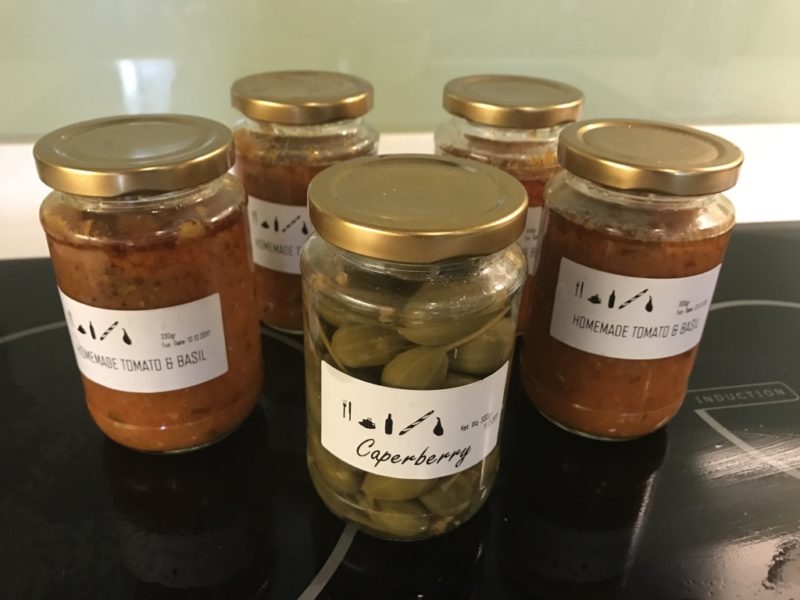
Minimal Waste Body Products
Non-food items can produce a challenge too. Burt’s Bees deodorant was our go-to deodorant in the US because it works and comes in a metal container. Sadly, I can’t find Burt’s Bees deodorant in MY and our last bottle was taken by TSA. Thus began my year-long journey of finding minimal waste, aluminum-free deodorant in Asia.
Our family can’t get away with using mineral salt rocks and I have yet to make homemade deodorant that actually works well for us. I had hopes for Logona deodorant which is sold in glass, so mostly recyclable excepting the plastic cap, but alas, it didn’t work for us. After a year of searching, I finally found MooGoo aluminum-free deodorant. It comes in plastic but it totally works. I have gone to a great deal of trouble over the past year to find a solution that is zero waste or even less wast, with no success.
Making It – DIY
I prefer to make our body products whenever possible. I like making moisturizers, lip balms, pomade and other body and facial products. Only until recently did I discover sources in Malaysia for ingredients I need like: Beeswax, almond oil & vitamin E.
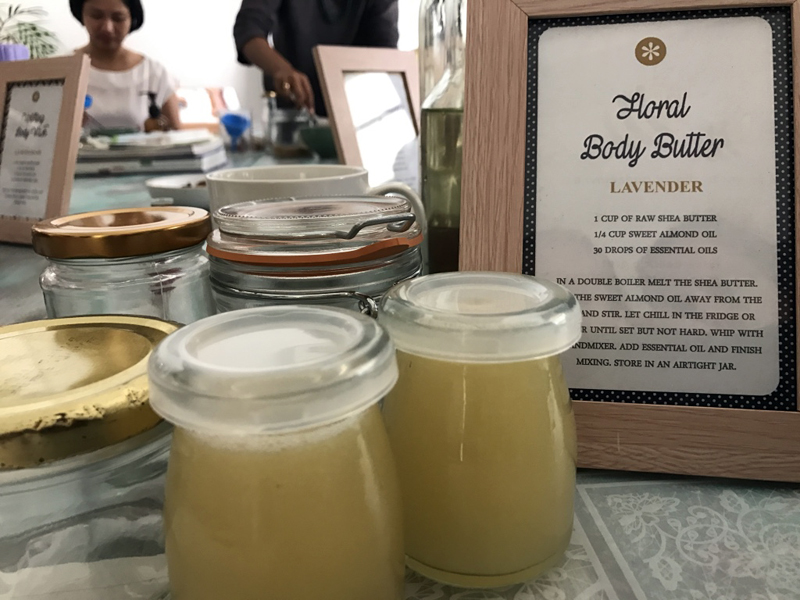
Coconut Oil
Still, even easier than making your own products is using pure, cold-pressed Coconut Oil. Coconut oil is a wonder all on its own and makes great moisturizer for skin and hair. It’s also widely available in Asia. For most people, it’s the perfect solution. I love it for my body, but my husband isn’t crazy about being all slick and greasy. We also can’t use coconut oil on our faces. Coconut oil gives me a weird face rash and my husband doesn’t like grease on his prescription glasses.
Stack Ranking Our Purchases
I stack rank our purchases with zero waste at the top, but without compromising on health.
- Health
- Zero Waste
- Reusability
- Recyclability
- Waste
In the case of deodorant, we could’ve easily found deodorant that worked and came in recyclable glass bottles. Those deodorants, however, all contained aluminum. I wrote about chemical-free products in Asia here. Until, I find a deodorant recipe that works, we’ll continue using the MooGoo roll-on deodorant. I love the deodorant, I don’t love the plastic bottle.
When There’s No Other Option to Plastic
When possible, I buy products naked or package-free. Soap without any sort of wrapper, meats from the butcher placed in our own containers, fruits from a fruit stand, and take-away meals placed in our own containers can give you easy zero waste wins. If I can’t find a food or product package-free, I will try to find buy it with paper packaging. When paper isn’t available, I will opt for glass, and buy the largest jar of product possible, which I will reuse. If glass is not available, and I really, really need the product, I will find a way to reuse that bottle as well. If my need isn’t great, and an item is only offered in plastic, I will either do without, seek a creative solution, or hunt for a recipe.
Here’s one case where I really needed a product that was only available in plastic.
Rhodiola Rosea, is an adaptogen herb that I feel like I need. It is sold in only one store in Malaysia, and as you can see, comes in a plastic bottle. I don’t buy many products that come in plastic bottles so it’s easy to find a use for the bottle when empty. Possible uses:
- Plastic is light weight so it works for our travel kits to hold dry product like Psyllium husk.
- Jar for small toy bits of the kids like Lego Nano blocks, rocks, or coins.
- Container for smaller sewing bits like bobbins or buttons.
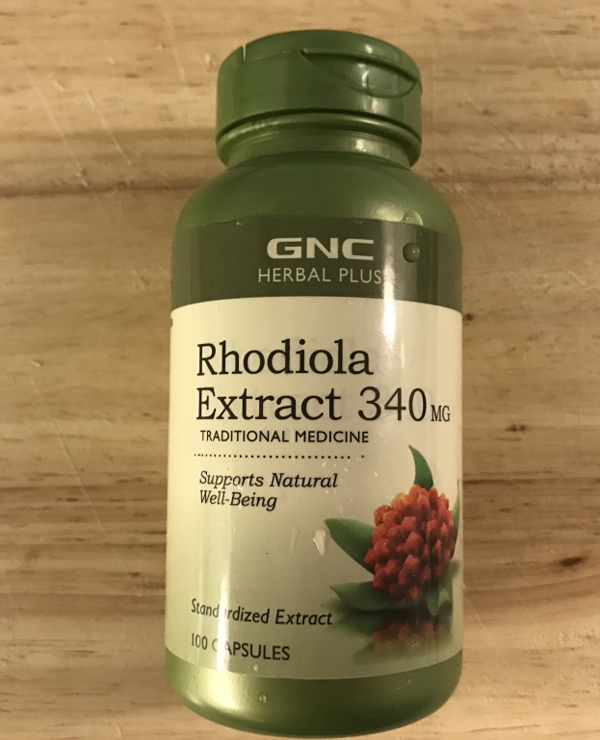
Restaurants Use Less Plastic
As I mentioned at the beginning, there are many ways that businesses in Asia do far better than similar businesses in the US. One of those ways is restaurants. If I remember to refuse the straw and the server remembers the request, the meal will usually be plastic-free, even when its street food. Since we eat one meal out a day, that pleases me.
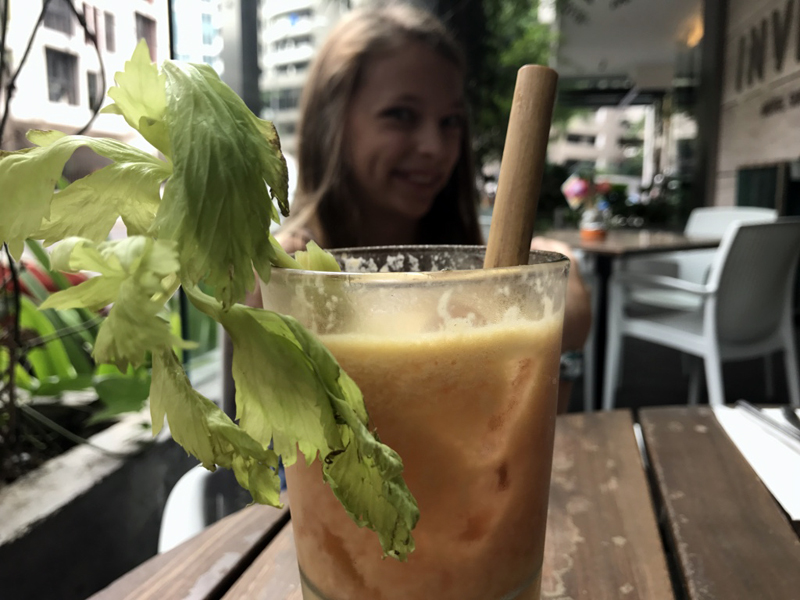
I would love to hear about ways you have been able to make minimal or zero waste in Asia work for you! Feel free to share in the comments.
xo – Bar
